Learning to read in Japanese is difficult, but we can show you a simpler and faster way to accomplish it. After mastering the 46 hiragana and 46 katakana characters, you will need to acquire a basic knowledge of more than 2,000 kanji, most of which are associated with more than one possible pronunciation, and then you will need to engage in extensive reading practice.
Instead of studying each of those kanji characters in isolation with the use of flashcards or learning to write them all by hand, hoping someday to arrive at the point where you can actually read Japanese text, why not learn kanji quickly with the help of mnemonics and then practice reading them in real sentences almost immediately? We have developed ten books that make it possible for you to do just that and to learn to read in Japanese as efficiently as possible.
Four Japanese Readers
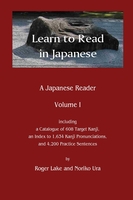
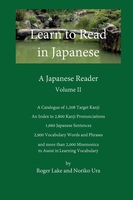
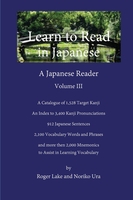
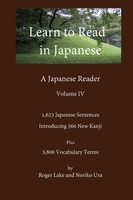
Our first Japanese Reader is Learn to Read in Japanese: A Japanese Reader, Volume 1. It teaches 608 kanji and contains a Kanji Catalogue describing those characters. The book is 552 pages long, and it includes more than 4,200 Japanese sentences for reading practice. You can buy this book from Ingram Spark or from Amazon.
Our second Japanese Reader is Learn to Read in Japanese, Volume 2. This book is 577 pages long and teaches 600 additional kanji, for a total of 1,208. It contains a Kanji Catalogue describing those characters, and it also includes more than 1,600 sentences and 2,900 Japanese terms for reading practice. Again, you can buy this book from either Ingram Spark or Amazon.
Our third Japanese Reader is Learn to Read in Japanese, Volume 3. It is 528 pages long and teaches 320 additional kanji, for a total of 1,528. It contains a Kanji Catalogue describing those characters and includes more than 900 Japanese sentences and 2,100 terms for reading practice. Once again, you can buy this book from Ingram Spark or from Amazon.
Our fourth Japanese Reader is Learn to Read in Japanese, Volume 4. It is 289 pages long, it teaches 560 additional kanji, for a total of 2,088, and it includes 1,623 Japanese sentences and more than 3,800 terms for reading practice. Due to space constraints, it does not contain a Kanji Catalogue, but the Core Kanji catalogue shown below and sold separately is designed to be used with this Reader. Like the other three books, this book is available from either Ingram Spark or Amazon.
Core Kanji, a Catalogue for Learning 2,088 Kanji

We have also assembled Core Kanji: a Catalogue of 2,088 Essential Kanji, listing information about the 2,088 characters that are taught in the four Readers just mentioned. This book is 448 pages long and includes a Kanji Pronunciation Index listing 4,200 kanji pronunciations, allowing you to look up a kanji easily when you know one or more of its pronunciations.
Please note that the first three Japanese Readers described above each include a preliminary version of this Core Kanji catalogue, describing all of the kanji that have been introduced in the curriculum up to that point. Therefore, the complete Core Kanji catalogue is not necessary for students who are studying Readers 1, 2 and 3. However, this version of the catalogue is a valuable reference book whenever you need to look up the kanji characters that are taught in the four Readers. Again, you can buy this book from either Ingram Spark or Amazon.
Like the earlier kanji catalogues that are included in the first three Readers, the Core Kanji stand-alone catalogue lists the kanji together with basic information, consisting of: 1) pronunciations that students are likely to encounter for each character; 2) meanings of the character; 3) one or more sample Japanese words for each of the character’s possible pronunciations; 4) a memorable description of the character, to help students to recognize it more easily in the future (such descriptions often focus on differences between the current kanji and other similar ones); 5) a brief sentence that contains retrieval cues (or mnemonics) for each of the character’s possible pronunciations; 6) comparisons between the character and other similar kanji; and 7) (in the stand-alone catalogue only) kanji groups, in which kanji with similar traits are grouped together.
As a bonus, the Core Kanji stand-alone catalogue contains the files and instructions that you will need in order to learn and use our powerful kanji recognition tool known as Kanji ID. These files include the Core Kanji catalogue, a Kanji Group Index, a Kanji Trait Index and a Kanji Table, all designed to help you to recognize all 2,088 kanji based on their dominant traits. You can read more about how to use this kanji recognition technique on the Kanji ID page.
Kanji Memorization Drills
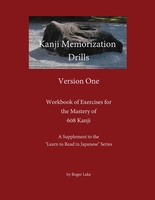
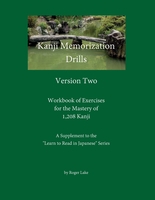
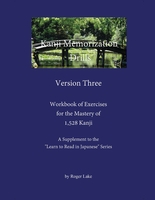
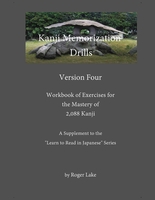
We have prepared four versions of “Kanji Memorization Drills,” which are sets of exercises designed to help you to learn kanji recognition and pronunciations. Each version is linked to one of our four Learn to Read in Japanese Readers.
These Memorization Drills will strengthen your ability to recall and pronounce the 2,088 kanji found in our books and, since they group similar characters together on the same page to create informal “groups,” you will start to perceive the kanji in new ways as you use them. You can read detailed information about how to use the Drills by downloading this file: Memorization Drills Sample. You will also be able to see a typical page taken from the Drills.
Version One targets the 608 kanji that are introduced in Learn to Read in Japanese, Volume I. Version Two covers the 1,208 kanji that are taught in Learn to Read in Japanese, Volume II. Version Three covers the 1,528 kanji that are taught in Learn to Read in Japanese, Volume III. Finally, Version Four covers the 2,088 kanji that are taught in Learn to Read in Japanese, Volume IV.
Studying kanji through memorization drills can have a calming effect on the mind. Sitting away from electronic screens, one holds a drill book and an index card, focusing on a single isolated kanji character while trying to recall its shape and its various pronunciations. When an error is made, the only consequence is a small dot in the margin – a gentle prompt to come back and review the character later. In contrast, the correct identification of a kanji and its readings delivers a brief rush of energy and a renewed sense of confidence.
You can buy the Kanji Memorization Drills by using the following links:
- Version One. Ingram Spark or Amazon
- Version Two. Ingram Spark or Amazon
- Version Three. Ingram Spark or Amazon
- Version Four. Ingram Spark or Amazon
Since these drills are challenging, we suggest that you begin with Version One and gradually work your way up to Version Four.
A Glossary of Terms Found in our Japanese Readers
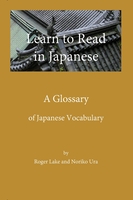
As you study these books, you will be exposed to an increasing number of Japanese vocabulary terms. This increase in Japanese vocabulary is an inevitable result of the fact that each kanji character is associated with its own unique words.
We have decided to try to help students organize and remember this vocabulary by publishing a Glossary of the more than 9,700 Japanese terms that appear in the four Readers shown above. The glossary cannot replace a Japanese dictionary, but it contains all of the vocabulary terms that you will need to know while using our Readers, together with mnemonics and comparisons among different terms. You can buy this book from Ingram Spark or from Amazon.
Summary of Buying Options
The printed books are available from two publishers.
1. Kindle, a subsidiary of Amazon. These books are available for purchase at Amazon, at Amazon UK, at Amazon Japan, etc.
2. Ingram Spark, which sells through bookstores and other outlets that are not affiliated with Amazon, including at Barnes and Noble, at Booktopia in Australia, at Walmart, at Thriftbooks and at other sites. The Ingram Spark books have the advantage of being somewhat lighter and thinner than the Kindle books.
All of the books, including the Memorization Drills are also available in PDF format (see the next section), but if you choose to purchase the Drills in that format, we suggest that you print them at home, rather than using them on an electronic screen, because we’ve found that the best way to track your progress while using the exercises is to place small dots in the margins next to the characters whose pronunciations you cannot recall and then, after you have successfully re-tested yourself on those kanji, using an eraser tool like the Pentel Presto Jumbo Correction Pen to erase those dots. After you print the Drills, we suggest that you staple the sheets together in groups of about 24 pages, to enable the dot technique.
PDF Options
As just mentioned, our ten books are available in PDF format. If you are relatively comfortable with the frustrations that are inherent in computers, we suggest using the Japanese Readers, the Core Kanji catalogue and the Glossary in PDF format for reading practice on a desktop computer or laptop where one can open multiple windows containing different PDF documents. When the documents are arranged in this way, students can easily turn from, say, Japanese text in one window, to English text and romaji in another window, to information about kanji in a third window, to similar or related kanji in a fourth window (for comparison purposes), to a Pronunciation Index for looking up kanji in a fifth window, to Glossary terms in a sixth window, and/or back to the Japanese text in the first window. Please see Efficient Reading Practice on a Computer for more information. You can view the PDF files at our PDF Store.
Some students find it convenient to use our printed books on some occasions, for a more relaxed study experience, and to use our PDF books on other occasions, for reading practice on a computer as just described, or for document searches.
For example, if you are reading one of our Readers and encounter a kanji that is easily confused with other kanji that you have learned, you may want to search for that kanji, or its reference number, in the PDF version of one of our Memorization Drills, using an electronic device. This will allow you to identify the page number in the Drills where that kanji is listed, and you can then turn to that page in the print version of the Drills document. On that page, you will find an informal group of similar kanji, including the one in question, and you can use an index card to cover the “answers” on the right side of the page while you quiz yourself on the kanji in that group before returning to your reading.
With this in mind, we offer a 50% discount to students who purchase the PDF versions of any books that they already own in print format. Please see the PDF Store for more details.
How can students read Japanese and learn kanji at the same time?
Although it might seem impractical to start reading practice before you know kanji very well, this approach is firmly grounded in a study technique known as Active Recall, which can be defined as “learning by answering questions.” Active Recall is the technique that underlies these Japanese Audio Flashcard Lessons, and it is also the basis of flashcard learning generally. In addition, the Pimsleur method and the “Learn in Your Car” method, both described here, are based on Active Recall.
When you look at a Japanese word and try to read it unassisted, you are essentially asking yourself the questions, “How is this word pronounced, and what does it mean?” These simple questions force your brain to work to recall each character, its pronunciation and its meaning. Since there is no penalty for incorrect answers and since the answers to the questions that you can’t answer are immediately available, Active Recall is an enjoyable way to learn. When you are able to answer questions correctly, you will experience considerable satisfaction and a sense of competence. Studies have shown that Active Recall is highly effective for building strong memories, compared to more passive study methods.
As you read the books, you will find that all of the help that you need to learn how to read Japanese is close at hand. If you relax and read the sentences at your own speed, you will be exposed to the same kanji repeatedly in different situations. By simply reading and availing yourself of the feedback and the other assistance that the books provide, you will soon learn kanji and start reading Japanese text.
Where can I find reviews of these books?
You can read reviews of some of our books that teach kanji and help you learn to read Japanese on Amazon US, Amazon UK, and Amazon Japan. In addition, there are two reviews on Tofugu.com, at this site (the review is the 4th item from the top) and also at this site (the review is the 2nd item from the top).
How to Use the Japanese Readers
In all four Japanese Readers, we make it easier for you to learn to read Japanese by introducing new kanji at the beginning of each chapter and then asking you to take a quick pre-test on their pronunciations before you start to read. The practice reading material in each lesson includes only kanji characters that you know or are in the process of learning, and we provide immediate feedback about your reading accuracy in the form of same-page romaji equivalents and translations.
We provide at least three practice sentences for each new kanji. In addition, in Readers 2, 3, and 4 we include thousands of Japanese words and phrases for vocabulary reading practice. This vocabulary comes from three sources: the examples in the Kanji Catalogue, the practice sentences in each chapter, and (for Readers 2 and 3) the optional supplemental reading material available online.
These books are designed to help you learn to read Japanese in five steps:
Step One. Kanji Catalogue. Before you start a chapter, turn to the Kanji Catalogue and take some time to review the new kanji that are listed in the New Kanji table at the beginning of the chapter. Your aim should be to acquire the ability to recognize each kanji and associate it with its pronunciations.
Step Two. Pronunciation Pre-Test. Next turn to the chapter that you are about to start reading and take the “Pronunciation Pre-Test.” To do this, look at the New Kanji table and try to voice each of the pronunciations for all of the kanji in the table. Use the table at the bottom of the page to check your accuracy. Repeat this test several times until you feel ready to start reading.
Step Three. Vocabulary List with Mnemonics. Next start reading the Vocabulary List, being careful to cover the “answers” on the right side of the page with a piece of paper or your thumb. You will usually have a chance to practice reading each new kanji multiple times in different words. You will also see mnemonics for most of the words that appear in the Vocabulary Lists.
Step Four. Practice Sentences. Next read the Practice Sentences that are provided in each chapter. This is where you will really feel that you have started to learn to read Japanese. Again, be sure to cover the text on the right side of the page as you read, but don’t hesitate to uncover it if you aren’t sure about kanji pronunciations or when you don’t know how to translate the Japanese text.
Step Five. Supplemental Reading (Readers 2 and 3 only). We hope that you will take this last step, but it is optional. We have identified some fascinating Japanese language articles online that use only the kanji that you have already learned. These articles are available from “Satori Reader” (73 articles referenced in the second Reader) and from “News in Slow Japanese” (44 articles referenced in the second Reader and 98 articles in the third Reader). As you read these articles, you will see that you have made significant progress in your effort to learn to read Japanese. Please click on this link to read more about these supplemental resources.
Please watch this video to see how to use the print version of the book “Learn to Read in Japanese, Volume I,” to learn how to read Japanese.
Stroke Orders
To acquire the ability to learn kanji and other characters as they are actually written in Japan, we suggest that you spend some time writing them in accordance with their prescribed stroke orders. If you become familiar with stroke orders, you will be more likely to recognize the characters when they are written in non-standard fashion, as they often are in Japan. To see the prescribed stroke orders for hiragana, katakana, and the 608 kanji that we teach in the first book, please download and save the following files. You may wish to print these documents and refer to them when you practice writing these characters.
Kanji Stroke Orders for Volume 1, updated 05-19
If you have any questions or comments about the books, please write them in the box below (you will need to scroll all the way to the bottom of the page). We will do our best to reply to every message that we receive, and we will post the ones that are of general interest on this page. If you would rather contact us privately, you may send an email to administrator@japaneseaudiolessons.com.
Next, More About Learning to Read in Japanese
After searching extensively, I discovered this great book that is unlike any other I have found!
Being away from Japan for many years, and recently returning there to live, I sought a good way to refresh and build upon my previously acquired language skills. This book (as well as the second volume in the series) filled that void. The content, style, focus and execution provide relevant conversation examples that apply to daily life. Gradual introduction of new kanji with each lesson, while constantly reusing kanji learned in prior lessons, is an effective reinforcement method for memorizing kanji.
This is a great tool for anyone serious about learning to read Japanese. The side-by-side arrangement of the Japanese text with the accompanying Romaji and English versions is very user-friendly. The book works well in three ways: first, as a self-study course for learning to read Japanese; second as a practical reference for identifying useful daily survival phrases; and third, as a primer of everyday grammar usage.
Regardless of whether you are just beginning to study Japanese, or if you are desiring to boost your existing language proficiency level, this book offers the best method I have found for learning to read Japanese.
Thank you so much, Barry. We really appreciate your support.
Hi, I have purchased the two volumes of your books “Learn to Read in Japanese”. I thought the audio files of the sentences were available. Is this so? If so, could you please tell me how to find them. Thanks
Hi Barbara,
Thank you for buying the two books. I hope that they will be helpful as you study Japanese.
As I mention in the Preface to the first book, the 4,200 sentences in the first book overlap considerably with the 7,500 sentences in the audio lessons which you can download free of charge from JapaneseAudioLessons.com (go to Audio Lessons, Lesson Download Portal), but the order of the sentences is completely different. If you were to study the audio lessons and then read the book, you would find many familiar sentences in the book.
The sentences in the second book were taken from the internet, for the most part, although many of them were derived from sentences in the audio lessons.
Hi Roger, congratulations to you and Ura-san on the first book, it’s a great achievement. Has the second book been sent to stores yet, I don’t see it on Amazon yet?, I am Tokyo based, awaiting eagerly, John-Paul
Hi John-Paul,
Thank you for your encouragement. Yes, the second book is now available on Amazon Japan. Please try this link. We hope you like it.
Hi Roger,
Let me thank you for this high quality material you made with the first book, I’m eager to start the other.
Do you think btw that the first book is covering more less all Kanji needed for JLPT 3? I believe it is a match in term of number but it might be significantly different from the targeted kanji in the test.
Denis
Hi Denis,
That’s an excellent question. I had not thought very deeply about how the two books might help people who are studying for the JLPT tests.
After researching this today, I’ve come to the following tentative conclusions: The N5 test supposedly requires knowledge of 103 kanji and the N4 test requires knowledge of 181 kanj. All of these kanji are taught in Learn to Read in Japanese, Volume I. However, Volume I does not come close to teaching the kanji required for the N3 test.
The N3 test requires 580 additional kanji. Volume II of Learn to Read in Japanese, which I am proofreading now and plan to release this summer, will teach 506 of those kanji. However, there are 74 additional kanji required for the test which Volume II will not teach. Therefore, I plan to make a list of those 74 additional kanji and post it on this web site after the book is released, so that students who are planning to take JLPT N3 will know which additional kanji they need to learn.
Thank you for asking this question, as I think that this will help quite a few other students.
I found your book interesting but I wonder if you’ll have the next level of it. I want to take JLPT N2 so I need books like yours.
Hi Mitsuki,
Yes, I’m working on Volume 2, in which I hope to teach another 600 kanji or so. I’m about half finished, but I really can’t predict when it might be ready for publication.
Update April 1, 2018. The second book is finished, but I’m still proof-reading it. It will cover 600 additional kanji. I hope to publish it this summer.
I have your 1st book. It was of great help-especially for non-schol types like me. I am eagerly waiting for the 2nd book. I bought the first book at Kinokuniya, in Shinjuku. Will the second be available there?
Hi Chitta,
Thanks for your message. I’m glad you liked the book.
The second volume is finished. I’m excited about it, but there is quite a bit of proofreading and checking to do before I can publish it. It covers 600 more kanji in 75 chapters and is slightly longer than the first book.
The book will present each new kanji in 5 stages: 1) the kanji catalogue, which also includes the 608 kanji from the first book, for a total of 1208; 2) the kanji pronunciation pre-test at the beginning of each new chapter (8 new kanji per chapter); 3) a chance to practice reading the new vocabulary words that appear in the kanji catalogue, the practice sentences and the supplemental reading material, with mnemonics to help you to remember each new word; 4) at least three practice sentences for each new kanji, separated from one another; and 5) optional supplemental reading material to practice reading the kanji in the context of authentic Japanese stories or articles (optional because you need to access paid content on the internet in order to read it, but reasonably inexpensive).
I also have seen the book for sale at Kinokuniya in Shinjuku. We will try to make sure that they carry the second book as well.